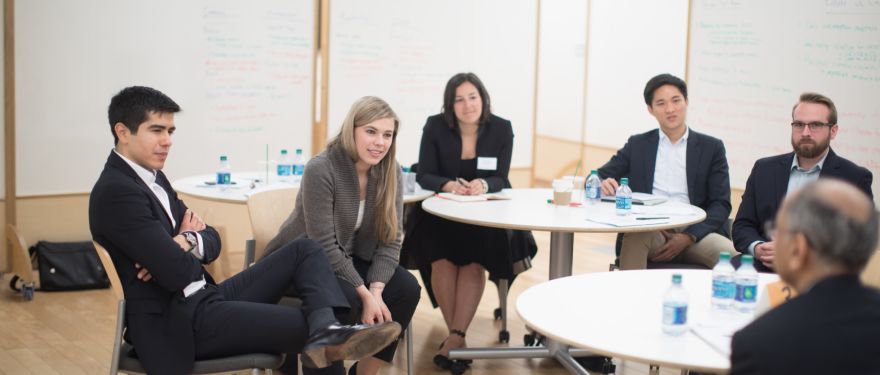In September 2010, Lauren Coyle, HBS MBA 2010, entered the leadership development program at DaVita Kidney Care. Formally titled, “The Redwoods Program,” it would guide Coyle through a three-phase curriculum that concluded in April 2011, and lead to the general management role for which she had been aiming throughout her earlier career and subsequent business school education.
The Redwoods Program, especially its hands-on practicum component, “drew me to DaVita,” Coyle says. Now that she has successfully established herself as a division vice president at the firm, she recognizes that DaVita’s program is not only an attractive benefit to potential recruits, but a powerful way for the company to instill its values throughout its leadership team.
These reciprocal benefits should drive leadership development programs (LDPs), says Kristen Fitzpatrick, managing director of the Career & Professional Development office at HBS. “Don't just start an LDP to attract talent,” Fitzpatrick says. “You need to think about what’s best for your company; you’re looking for talent pipeline and bench depth, five to seven years out.”
In principle, an LDP seems an obvious investment, but in practice, how should one be designed? Fitzpatrick encourages flexibility. “No one size fits all,” she says. She identifies four common models:
1. Informal Leadership Track: The least formal approach in which, Fitzpatrick says, “There’s no rotation program per se, but recruits are acknowledged as potential leaders and given special attention, such as seminars and direct exposure to senior leadership.”
2. Rotational Program: The most familiar model comes in two forms – an established general management program with fixed time periods across a wide range of functions, and a customized approach “with designated time points to rotate off.”
3. Cross-functional Rotation: Similar to the Rotational Program, but limited to specific functional tracks.
4. Assistant to CEO: Participants work directly with division presidents/executives but, Fitzpatrick says, “Learn by doing. It’s a hand-in-hand education.”
Fast-track to responsibility
In DaVita’s Redwoods Program, future leaders move quickly into real responsibility. After a learning phase in which participants (called “Redwoods” in DaVita vernacular) shadow clinical team members to, Coyle says, “learn the guts and core of our business,” Redwoods are assigned full responsibility for a DaVita clinic. During their four-to-six month stint in the “Leadership Practicum,” Redwoods dive deep, empowered to hire and fire teammates, and manage finances. “Most importantly,” Coyle notes, “they are responsible for the clinical outcomes of their units.” Despite the pressure, “Most people love their practicums!”
In the third and final phase, Redwoods transition into their fulltime roles. They assume management positions while being mentored with not one, but three DaVita colleagues with whom they check in at least once or twice a month: an executive mentor, a “Redwood Buddy” who has graduated from the same leadership program, and a R.O.D. or “Regional Operations Director” who can provide expert guidance in the field.
Fitzpatrick believes that post-program planning is essential to leadership development success. “One of the biggest flaws I see is that many companies don’t do much after the program,” she says. “Bring participants together, perhaps quarterly or at least twice a year, to swap stories and trade ideas. These sessions not only reinforce bonding, but signal to everyone the importance of your program.”
Beginnings count too. “Their first roles should be stretch roles,” Fitzpatrick says. “They enable your new leaders to show that they have what it takes to be successful.”
Reflecting on the virtues of her own experience, Coyle attributes the success of the Redwoods Program to several specific qualities. “We go through the program as a cohort, so there’s a shared experience,” she says. “The people who went through Redwoods with me are still among my best friends in the world.”
Second, she believes in exposure to C-suite executives. “We get a lot. It not only makes us feel good, it makes our big company feel small. You need to know lots of people to know who-does- what to get things done. You know who to call on for support when you need it.”
Finally, the program gives future leaders genuine general management responsibilities, fast. “Ours is a general management program,” she says, “so it’s important to let Redwoods be general managers. I was shocked by how quickly I was moved into real responsibility.”
Although there are many options for LDP design and implementation, Fitzpatrick insists that a good one “doesn’t need to be super-complicated. But it does take time, expense, and commitment. You should be thoughtful about how you do this. It’s a long-term play, not something you do on a whim.”







